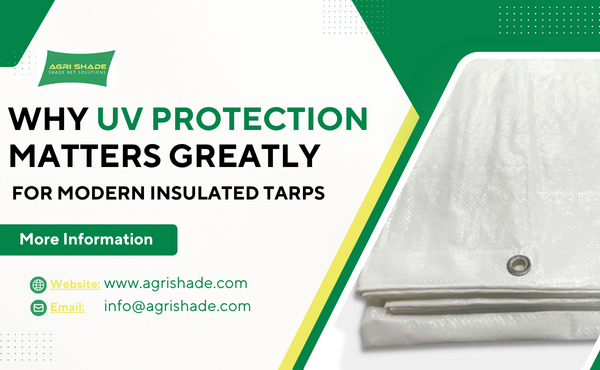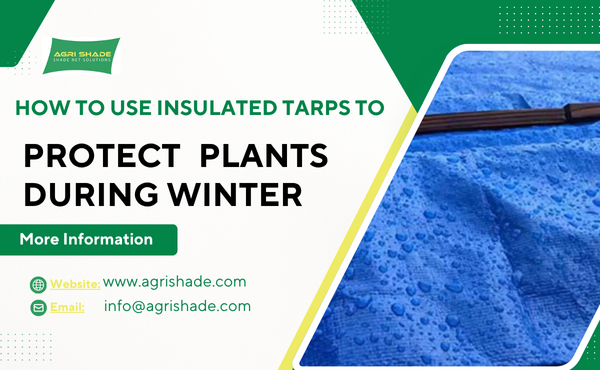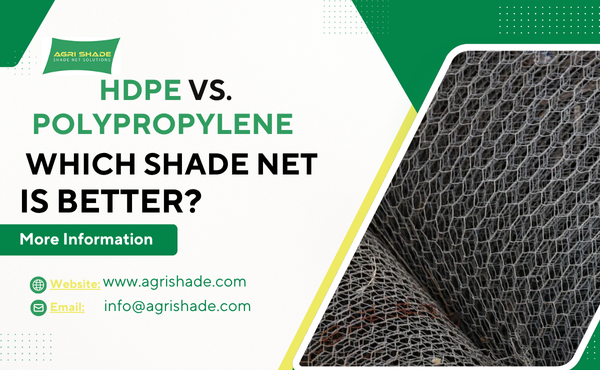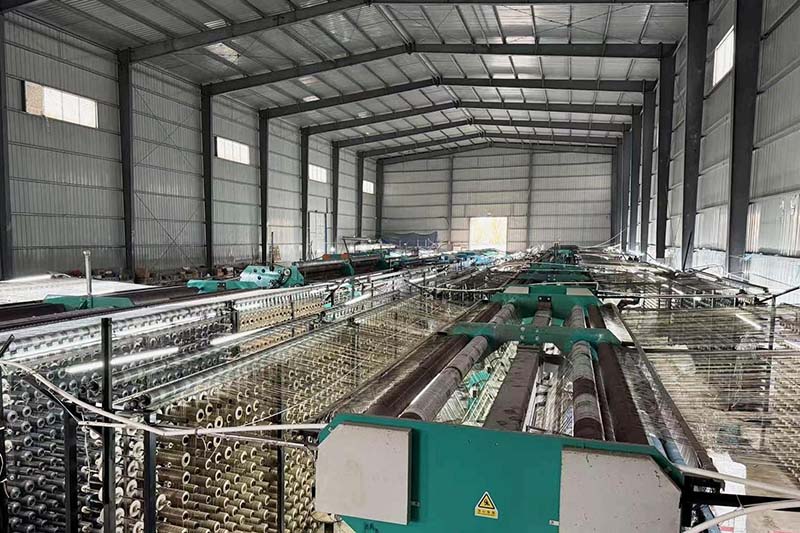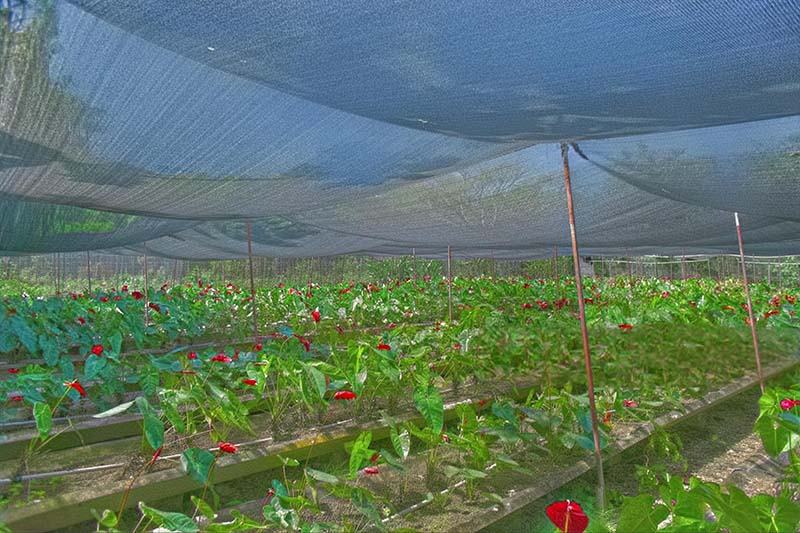
Greenhouse nets, especially agricultural shade nets, offer a powerful solution for growers facing drought. These nets block sunlight, keep soil moisture stable, and create a cooler, more humid space for crops.
Farmers often lose water quickly from their fields during droughts. Studies show that evaporation caused 61% of drought severity between 2020 and 2022, while reduced rainfall made up only 39%. Shade nets can cut water evaporation by up to 30%, helping plants survive and thrive.
- Shade nets can reduce water evaporation by up to 30% during drought conditions.
- Farmers in regions dependent on local moisture face significant risks due to changes in soil moisture and deforestation.
Evaporation and Drought Stress
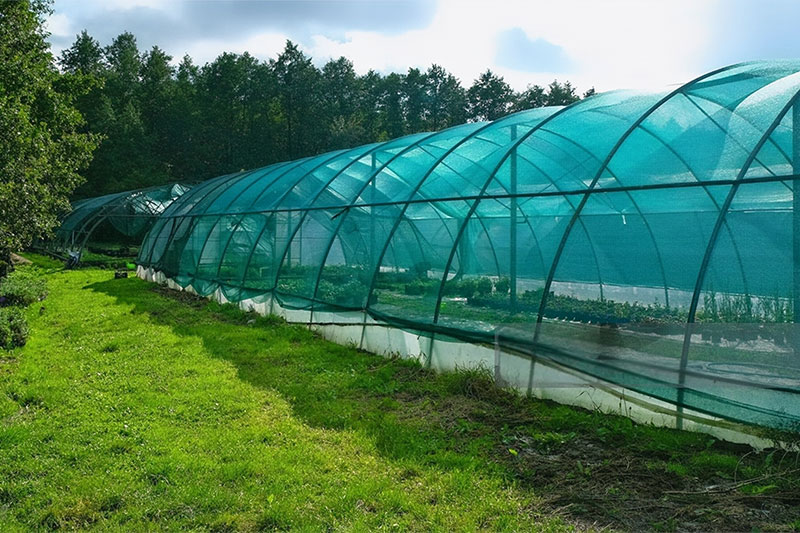
How Water Evaporates
Water leaves the soil and plants through two main processes: evaporation and transpiration. Evaporation changes liquid water in the soil into vapor, which escapes into the air.
Transpiration happens when water moves through plant roots and exits through tiny pores on leaves. Several factors affect these processes:
- Solar energy heats the soil and plants, speeding up evaporation.
- Soil properties, such as texture and color, influence how quickly water leaves the ground.
- Surface features, like roughness and reflectivity, also play a role.
- Environmental conditions, including sunlight and air humidity, impact transpiration rates.
Temperature, humidity, and wind speed strongly affect how fast water evaporates.
Farmers must understand these processes to prevent water loss, especially during dry periods.
Impact of Drought on Crops
Drought causes serious problems for crops. When water becomes scarce, plants struggle to grow and produce food. Yield losses can reach 50-80% in major crops during severe droughts.
Plants show signs of stress, such as leaf rolling, yellowing, and wilting. These symptoms mean the plant cannot get enough water to support healthy growth.
Low soil moisture makes it hard for roots to absorb nutrients. High soil temperatures change how microbes work, which affects nutrient cycling.
Sometimes, drought leads to extra nitrate in the soil, but plants cannot use it without enough water. During critical growth stages, like flowering and seed development, drought stress can reduce crop yields even more.
Farmers in arid regions face these challenges every season. They need solutions that help crops survive and thrive when water is limited.
Greenhouse Nets and Water Conservation

Blocking Sunlight to Reduce Evaporation
Greenhouse nets help prevent water loss by blocking direct sunlight from reaching the soil and plants. Shade nets act as a barrier, reflecting and filtering sunlight.
This process lowers the temperature on the soil surface and reduces the energy available for evaporation. When less sunlight reaches the ground, water stays in the soil longer. Growers see evaporation rates drop by up to 55% when they use greenhouse nets in their fields.
The following table shows how greenhouse nets improve water savings and crop production:
| Finding Description | Result |
|---|---|
| Higher fresh weight production | 14% increase |
| Water savings for evaporative cooling | More than 40% |
| Effect of extracted air temperature on water use | 27% savings with 4 K increase |
| Additional water savings from cooling efficiency | 12% savings from 5% higher efficiency |
| Influence of greenhouse cover-to-ground area ratio | Affects water use for cooling |
Shade nets also control the amount of sunlight based on crop needs. This flexibility helps growers prevent water loss and protect sensitive plants from overheating.
Maintaining Soil Moisture
Greenhouse nets create a stable environment that helps maintain moisture in the soil. By reducing sunlight and lowering surface temperatures, these nets slow down evaporation. The soil stays cooler, and water retention improves. Crops can absorb water for longer periods, which supports healthy growth even during droughts.
The table below explains how greenhouse nets work to maintain moisture and prevent water loss:
| Mechanism | Explanation |
|---|---|
| Reduction of sunlight | Shade nets can reduce or reflect sunlight, controlling the amount that reaches crops based on their needs. |
| Temperature control | They can significantly lower temperatures in shaded areas, preventing overheating and promoting crop growth. |
| Moisture retention | By minimizing evaporation through shading, they help maintain consistent soil moisture levels. |
Farmers use greenhouse nets to prevent water loss and keep soil moisture stable. This practice supports water conservation and helps crops survive in dry climates.
Creating a Humid Microclimate
Greenhouse nets change the environment around crops by increasing humidity and reducing wind speed. These changes help prevent water loss and slow down transpiration. Plants lose less water through their leaves, which means they stay hydrated longer.
The table below shows how greenhouse nets affect environmental factors:
| Environmental Factor | Change (%) |
|---|---|
| Relative Humidity | Increased by 8% |
| Wind Speed | Reduced by >60% |
| Global Radiation | Reduced by >20% |
| Air Temperature | Reduced by >1% |
| Relative Humidity Range | Increased by 3.2–12.9% |
Higher humidity under greenhouse nets makes it harder for water vapor to escape from plant leaves. This process slows down transpiration and helps crops retain water. The following points explain how humidity affects plant water loss:
- Humidity is a key factor influencing transpiration; high humidity prevents water vapor release from plants.
- In dry conditions, transpiration occurs rapidly due to a steep concentration gradient.
- High humidity levels hinder transpiration due to a lower concentration gradient.
Growers use greenhouse nets to create a humid microclimate and prevent water loss. This strategy helps maintain moisture and supports water retention in the soil.
Growers may face challenges when using greenhouse nets for water conservation. Limited rainfall can require alternative water sources, such as greywater or well water.
Benefits of Agricultural Shade Nets
Water Savings for Growers
Growers in drought-prone regions rely on agricultural shade nets to conserve water. These nets help reduce evaporation, which keeps soil moisture levels higher for longer periods. On average, growers report water savings of about 4% when using agricultural shade nets. This reduction in water loss means that farms need less irrigation, which is especially important during times of water scarcity.
Shade nets also help commercial farms lower their irrigation costs. By minimizing evaporation, these nets decrease the overall amount of water required for crops. Farms benefit from lower water bills and reduced energy costs for pumping and distributing water. Efficient irrigation systems work better under shade nets, allowing growers to water less often and use resources more wisely.
Healthier Plants and Better Yields
Agricultural shade nets create a stable environment for crops, which leads to healthier plants and improved yields. Greenhouses equipped with shade nets can achieve water savings of 50% to 90% compared to open-field farming. The controlled humidity and reduced transpiration rates help plants use water more efficiently.
This management of water resources allows crops to grow stronger and produce more food, even during droughts.
Growers see better results because shade nets lower plant water requirements and optimize water use. The type of greenhouse system also affects water efficiency, with closed systems performing best. Farms can control irrigation techniques more precisely, which leads to higher yields during periods of water scarcity.
- Greenhouses show lower transpiration rates due to controlled humidity.
- Shading mechanisms help crops use water more efficiently.
- Better irrigation control leads to higher yields in drought conditions.
Choosing and Using Greenhouse Nets
Types of Nets for Drought
Farmers in drought-prone areas need to select greenhouse nets that maximize water conservation. Shade nets made from high-density polyethylene (HDPE) or polypropylene offer durability and UV resistance. These materials withstand harsh weather and last for several seasons. Black shade nets provide the highest evaporation suppression efficiency, outperforming white and green nets. Suspended shade covers in Australia have reduced evaporation rates by 90%, while similar systems in Spain achieved an 85% reduction.
Shade nets block between 20% to 90% of sunlight. Nets with a 75% shading percentage keep soil moist and improve crop quality. Farmers report better yields, especially for heat-sensitive crops, when using these nets.
- Shade nets use synthetic materials like HDPE and polypropylene.
- These nets are lightweight and easy to handle.
Installation and Maintenance Tips
Proper installation ensures greenhouse nets work effectively. Farmers should choose a site with good sunlight and few obstructions. Leveling the ground creates a stable base. Building a sturdy frame with concrete footings or ground stakes keeps the net secure. Attaching the net tightly with clamps or ties prevents gaps and ensures even coverage.
Smallholder and large-scale farmers both benefit from greenhouse nets. Initial costs vary by farm size, but most see a payback period of one to two years. Large farms spend 1%-2.5% of gross sales on maintenance, while smallholders may have variable costs. Both groups achieve high returns, especially with high-value crops.
Greenhouse nets give growers a strong tool for water conservation during droughts. These nets reduce evaporation, keep plants healthier, and increase yields. Research shows that greenhouses help by slowing water loss, allowing closer crop placement, and supporting drip irrigation. The table below highlights these key benefits:
| Benefit Description | Explanation |
|---|---|
| Reduced Evaporation | Water in greenhouses does not evaporate as quickly as in open-air conditions. |
| Closer Crop Placement | Crops are planted closer together, minimizing water waste. |
| Drip Irrigation | This method improves water usage efficiency by delivering water directly to the plant roots. |
| Shorter Crop Cycle | Greenhouses typically allow for shorter growing seasons, leading to less overall water use. |
Growers can improve drought resilience by reviewing current practices and choosing the right netting options for their farms.


